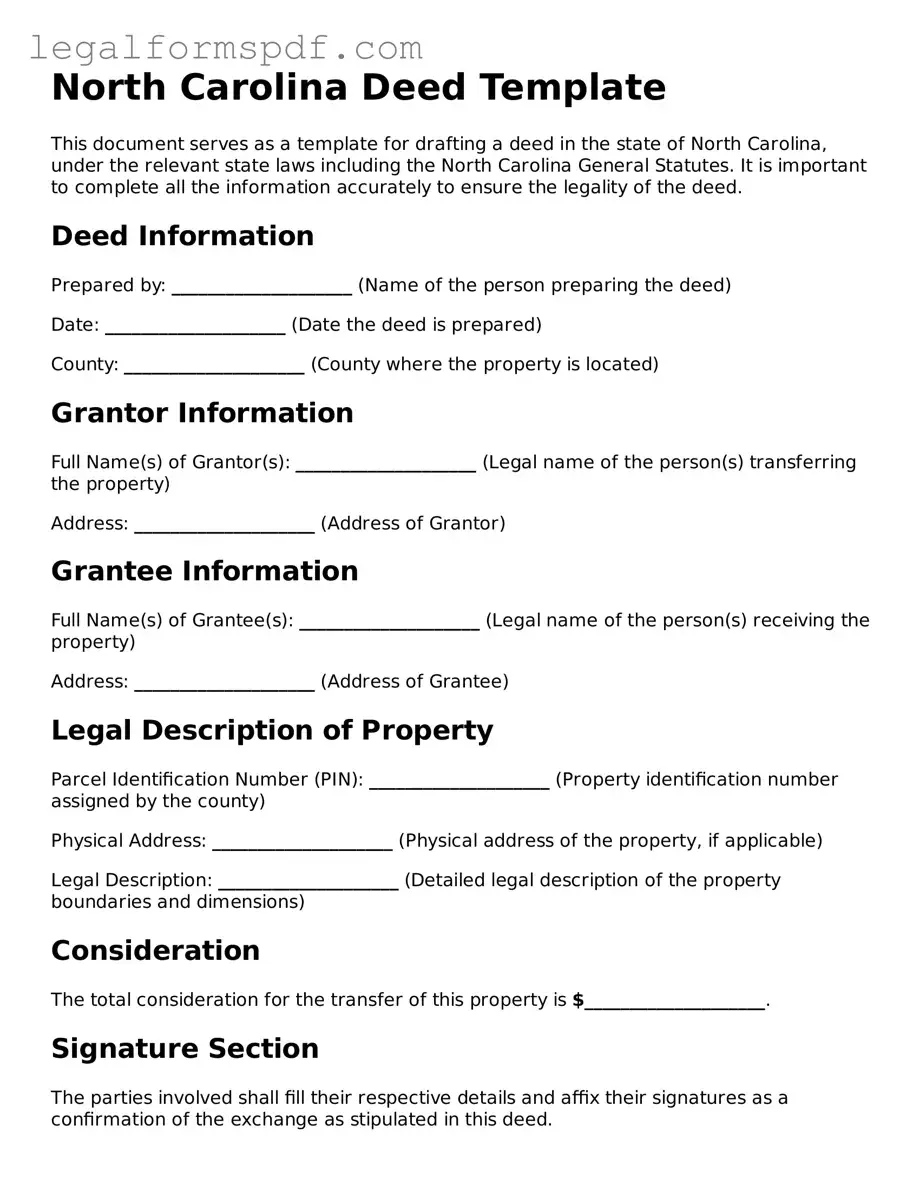North Carolina Deed Template
This document serves as a template for drafting a deed in the state of North Carolina, under the relevant state laws including the North Carolina General Statutes. It is important to complete all the information accurately to ensure the legality of the deed.
Deed Information
Prepared by: ____________________ (Name of the person preparing the deed)
Date: ____________________ (Date the deed is prepared)
County: ____________________ (County where the property is located)
Grantor Information
Full Name(s) of Grantor(s): ____________________ (Legal name of the person(s) transferring the property)
Address: ____________________ (Address of Grantor)
Grantee Information
Full Name(s) of Grantee(s): ____________________ (Legal name of the person(s) receiving the property)
Address: ____________________ (Address of Grantee)
Legal Description of Property
Parcel Identification Number (PIN): ____________________ (Property identification number assigned by the county)
Physical Address: ____________________ (Physical address of the property, if applicable)
Legal Description: ____________________ (Detailed legal description of the property boundaries and dimensions)
Consideration
The total consideration for the transfer of this property is $____________________.
Signature Section
The parties involved shall fill their respective details and affix their signatures as a confirmation of the exchange as stipulated in this deed.
Signature of Grantor(s): ____________________ (Signature of the person(s) transferring the property)
Date: ____________________
Signature of Grantee(s): ____________________ (Signature of the person(s) receiving the property)
Date: ____________________
Witness and Notarization
This deed must be witnessed and notarized according to the laws of North Carolina. Ensure that a notary public witnesses the signing of this document.
Witness Signature: ____________________ (Witness signature)
Date: ____________________
Notary Public: ____________________ (Notary public name)
Commission Expiration: ____________________ (Expiration date of notary commission)
Recording
Upon completion and notarization, this deed should be recorded with the Register of Deeds in the county where the property is located to ensure legal recognition of the transfer.
